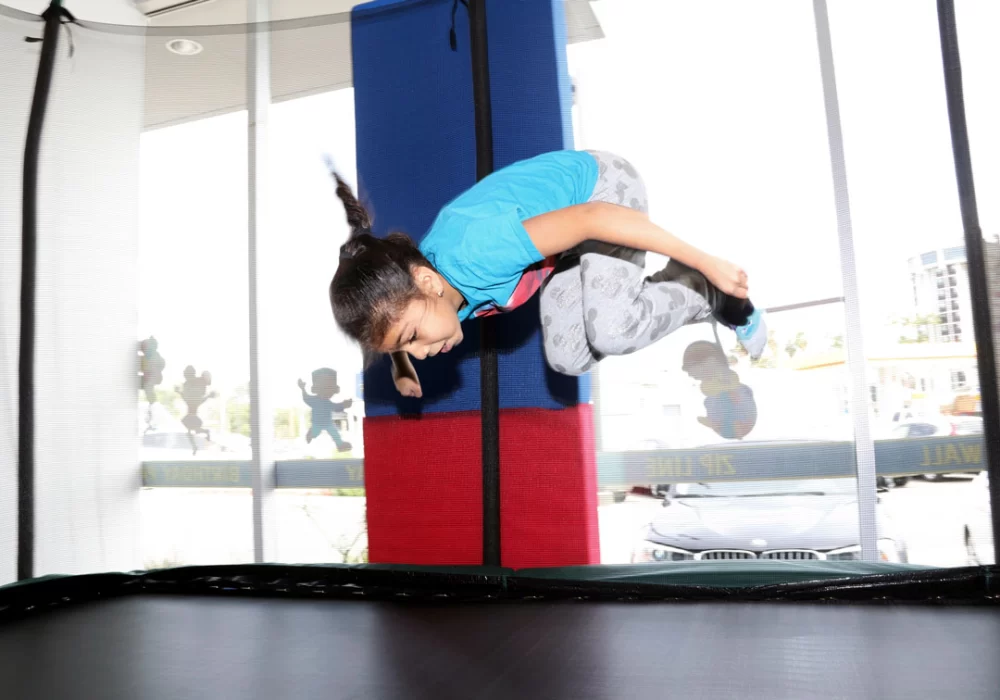
- understanding-psychology-of-trampoline-confidence
- role-of-physical-activity-in-boosting-confidence
- trampoline-confidence-and-overcoming-fear
- mental-health-benefits-of-trampolining
- real-life-stories-of-trampoline-confidence-growth
- tips-to-build-trampoline-confidence
- conclusion-building-lasting-confidence-through-trampolines
Understanding the Psychology of Trampoline Confidence
Trampoline confidence isn’t just about physical skill — it’s deeply connected to psychological factors that influence how individuals perceive their own abilities and challenges. At its core, trampoline confidence reflects a person’s self-efficacy — the belief in their capacity to succeed in specific tasks. This psychological construct affects motivation, persistence, and resilience, which are all key when learning new trampoline skills or overcoming initial fears.
The act of bouncing on a trampoline requires balance, coordination, and trust in one’s body. As individuals improve, they experience a sense of accomplishment that reinforces their confidence. Neurologically, this positive reinforcement triggers dopamine release, enhancing mood and promoting a desire to continue practicing. This creates a positive feedback loop between physical activity and mental well-being, where growing trampoline skills lead to enhanced self-esteem and vice versa.
The Role of Physical Activity in Boosting Confidence
Physical exercise, particularly activities involving coordination and balance like trampolining, plays a significant role in improving overall confidence. The psychological benefits extend beyond the trampoline itself. Engaging regularly in trampoline exercises improves body awareness and control, which can translate into better posture, movement, and a sense of physical competence.
Scientific studies highlight how exercise stimulates neurogenesis and improves cognitive function, which helps reduce anxiety and depression — conditions that often diminish self-confidence. For many, trampoline activity is a joyful form of exercise that combines fun with challenge, making it easier to maintain consistency and achieve lasting mental benefits.
Trampoline Confidence and Overcoming Fear
One of the most fascinating aspects of trampoline confidence is how it empowers people to face and overcome fears. Many beginners approach trampolines with apprehension — fear of falling, injury, or failing. However, learning safe techniques and practicing progressively builds courage and reduces anxiety.
From a psychological standpoint, gradual exposure to fear-inducing situations—in this case, controlled bouncing—helps retrain the brain to associate these activities with safety and enjoyment rather than threat. This gradual mastery cultivates not only trampoline confidence but also a broader willingness to tackle other life challenges with resilience and optimism.
Mental Health Benefits of Trampolining
Beyond confidence, trampolining provides substantial mental health benefits. The rhythmic bouncing action has been shown to improve mood, reduce stress, and foster mindfulness by encouraging participants to focus on body movements and sensations. This meditative quality helps alleviate negative thought patterns and improves emotional regulation.
Trampoline confidence often coincides with improved social interaction as well. Group trampoline activities promote teamwork and communication, further enhancing psychological well-being. Whether practiced in a gym, at home, or a trampoline park, these activities support holistic mental health improvements.
Real-Life Stories of Trampoline Confidence Growth
Consider Jessica, a young adult who struggled with social anxiety and low self-esteem. After joining a trampoline class, she slowly overcame her fears of judgment and failure. Each successful bounce boosted her confidence, and over months, she noticed improvements not just in physical skills but also in how she interacted socially and handled stressful situations.
Similarly, Mark, a senior, used trampolining as a way to regain physical coordination after an injury. The steady increase in his trampoline confidence encouraged him to pursue other physical activities, positively impacting his overall outlook on life. These stories highlight how trampoline confidence fosters transformation across ages and backgrounds.
Tips to Build Trampoline Confidence
Developing trampoline confidence takes time and patience. Start with these actionable tips:
- Begin with basic bouncing to familiarize yourself with the sensation and balance.
- Practice in a safe environment with proper supervision or guidance.
- Set achievable goals to experience success incrementally.
- Incorporate breathing exercises to manage anxiety during practice.
- Celebrate small victories to maintain motivation and positive reinforcement.
- Join group classes to benefit from social support and shared learning.
Consistently applying these methods can create a foundation of confidence that extends beyond trampolining into everyday life challenges.
Building Lasting Confidence Through Trampolines
The psychology of trampoline confidence reveals the powerful connection between physical activity and mental empowerment. By engaging in trampolining, individuals can enhance their self-efficacy, overcome fears, and improve mental health in enjoyable and meaningful ways. For those interested in starting or deepening their trampoline experience, exploring quality trampolines and expert guidance is essential.
Visit Trampoline Zone for the best products and support to help you or your loved ones build strong trampoline confidence. Start bouncing today and unlock a path to greater self-belief and happiness.







 Das Park4.0 (18 reviews)
Das Park4.0 (18 reviews) Etowah Park4.0 (346 reviews)
Etowah Park4.0 (346 reviews) Kids Indoor Playground3.0 (10 reviews)
Kids Indoor Playground3.0 (10 reviews) Land-O-Fun4.0 (647 reviews)
Land-O-Fun4.0 (647 reviews) Bohemia Recreation Center4.0 (28 reviews)
Bohemia Recreation Center4.0 (28 reviews) Trampoline4.0 (207 reviews)
Trampoline4.0 (207 reviews) Are Trampoline Parks Safe for Kids? Essential Guide for U.S. Parents
Are Trampoline Parks Safe for Kids? Essential Guide for U.S. Parents How Often Should You Replace Trampoline Springs? Tips for Proper Maintenance
How Often Should You Replace Trampoline Springs? Tips for Proper Maintenance How Much Is a Trampoline? A Detailed Guide to Trampoline Costs and Buying Tips
How Much Is a Trampoline? A Detailed Guide to Trampoline Costs and Buying Tips Bounce Techniques for Stronger Legs: Effective Exercises and Tips
Bounce Techniques for Stronger Legs: Effective Exercises and Tips Essential Music Gear for Trampoline Dance: Complete Guide
Essential Music Gear for Trampoline Dance: Complete Guide Fun STEM Experiments Using Trampolines to Spark Curiosity and Learning
Fun STEM Experiments Using Trampolines to Spark Curiosity and Learning